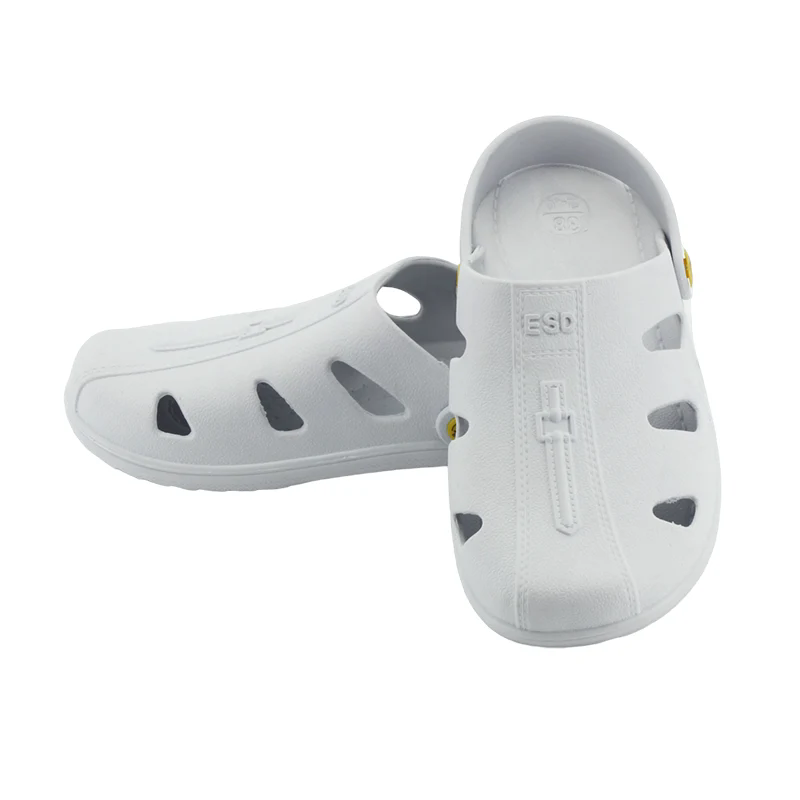Why Choose ESD Slippers for Workplace Safety and Efficiency
2025-08-27
In modern electronics manufacturing and laboratory environments, controlling static electricity is critical. One overlooked but essential component of this safety protocol is ESD slippers. But why are ESD slippers indispensable in workplaces that handle sensitive electronic components, and how do they contribute to both safety and efficiency?
Understanding ESD Slippers and Their Importance
Electrostatic discharge (ESD) is a sudden flow of electricity between two electrically charged objects caused by contact, an electrical short, or dielectric breakdown. Even minor static discharges can damage sensitive electronic components, leading to product defects, reduced reliability, or complete device failure.
ESD slippers are designed to mitigate this risk by providing a path for static electricity to flow safely to the ground. Unlike regular footwear, ESD slippers feature materials and structures that dissipate static charge efficiently without compromising comfort or mobility.
Key Benefits of ESD Slippers:
-
Protection of sensitive electronics: Prevents costly damage during manufacturing or assembly processes.
-
Enhanced workplace safety: Reduces the risk of sparks and electrical accidents in environments with flammable materials.
-
Compliance with industry standards: Many electronics and cleanroom environments require grounded footwear as part of their ESD control program.
-
Comfort and usability: Modern ESD slippers are designed for long-term wear with soft soles, breathable materials, and ergonomic fits.
By integrating ESD slippers into your workplace protocols, companies not only safeguard their products but also improve overall operational efficiency by reducing product defects and downtime.
How ESD Slippers Work: Technical Insights
ESD slippers function through a combination of conductive materials and strategic design to safely discharge static electricity. Here’s how they achieve this:
-
Conductive Fibers and Materials: The inner layer of ESD slippers often contains conductive fibers woven into cotton or synthetic fabrics. These fibers channel static electricity from the foot to the sole.
-
Anti-Static Soles: The soles are made from conductive or dissipative materials such as carbon-infused rubber or PVC, which create a controlled path for electricity to ground.
-
Grounding Connections: In professional setups, ESD slippers are used in conjunction with grounded floors or ESD mats to complete the grounding circuit.
-
Moisture Control: ESD slippers often include breathable materials to maintain foot comfort while ensuring consistent electrical conductivity, as humidity can affect ESD performance.
Technical Specifications of Typical ESD Slippers
| Feature | Specification/Detail |
|---|---|
| Upper Material | Cotton, polyester blend, or conductive mesh fabric |
| Sole Material | Conductive PVC, rubber, or polyurethane |
| Electrical Resistance | 10^5 – 10^7 ohms (dissipative range) |
| Size Range | 36–46 (EU) / 5–12 (US) |
| Weight | 200–300g per pair |
| Slip Resistance | High-grade anti-slip sole for industrial floors |
| Usage Environment | Cleanrooms, electronics assembly lines, laboratories |
| Compliance | ANSI/ESD S20.20, IEC 61340-5-1 |
These specifications ensure that ESD slippers provide reliable performance while accommodating different user needs and work environments.
Choosing the Right ESD Slippers: Practical Guidelines
Selecting the ideal ESD slippers involves more than just choosing a comfortable pair. The right choice depends on workplace requirements, safety standards, and individual user needs. Here are essential factors to consider:
a. Workplace Environment
-
Cleanroom Standards: For cleanroom applications, slippers must be lint-free and compatible with sterile environments.
-
Flooring Type: Consider slip resistance if working on wet or smooth surfaces.
b. Electrical Performance
-
Resistance Rating: Choose slippers within the recommended resistance range for your ESD control program. Too low resistance may create shock hazards, while too high resistance reduces protective effectiveness.
c. Comfort and Fit
-
Breathable Design: Prevents foot sweating and discomfort during long shifts.
-
Ergonomic Fit: Ensures minimal fatigue and promotes worker compliance with safety protocols.
d. Maintenance and Durability
-
Washable Materials: Cotton or synthetic blends that withstand regular washing are preferred.
-
Durable Soles: Soles must maintain conductivity over repeated use and cleaning cycles.
ESD Slipper Common Issues and FAQ
Q1: Can ESD slippers be worn outside cleanrooms or labs?
A1: ESD slippers are primarily designed for controlled environments, but they can be worn in general workplaces to minimize static accumulation. However, exposure to rough or wet surfaces may reduce their lifespan and effectiveness.
Q2: How often should ESD slippers be replaced?
A2: Replacement depends on usage and wear. Signs include reduced sole conductivity, visible damage, or loss of comfort. In high-use environments, slippers may need replacement every 6–12 months to ensure consistent ESD protection.
By addressing these common concerns, companies can maintain both safety and operational efficiency without compromising user comfort.
Integrating ESD Slippers into Workplace Safety Programs
ESD slippers are most effective when part of a comprehensive static control program, including grounded workstations, ESD mats, and proper personnel training. Integration steps include:
-
Employee Training: Workers should understand the role of ESD slippers and proper usage protocols.
-
Regular Inspections: Conduct periodic checks for wear, tear, and electrical resistance to ensure ongoing protection.
-
Complementary Equipment: Pair slippers with ESD wrist straps, mats, and conductive clothing for full-body static control.
-
Compliance Monitoring: Maintain records to ensure that all safety measures align with industry standards such as ANSI/ESD S20.20.
Investing in high-quality ESD slippers significantly reduces the risk of product damage, workplace accidents, and compliance violations, creating a safer and more efficient environment.
For companies seeking reliable and high-performance ESD footwear, Xin Lida offers a complete range of ESD slippers designed to meet stringent industrial and cleanroom requirements. Our slippers combine ergonomic design, durable materials, and consistent electrical performance to ensure both safety and comfort. Explore our full collection and ensure your workplace meets the highest standards of static control. Contact us today for customized solutions or bulk orders tailored to your operational needs.



